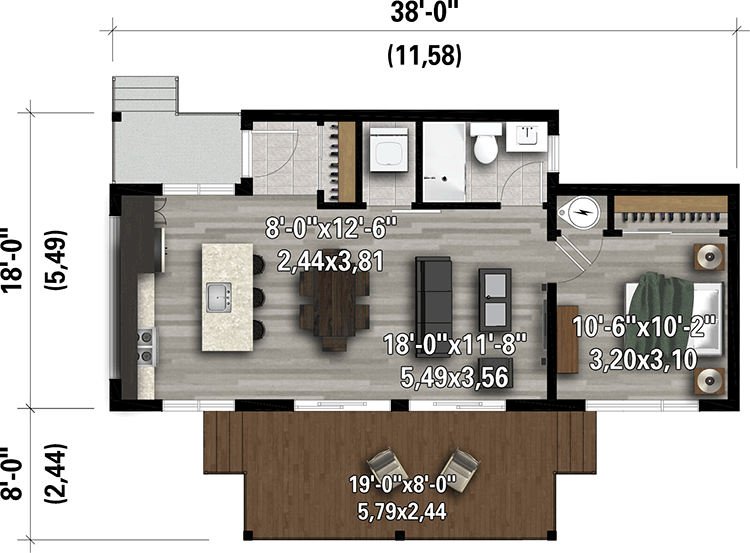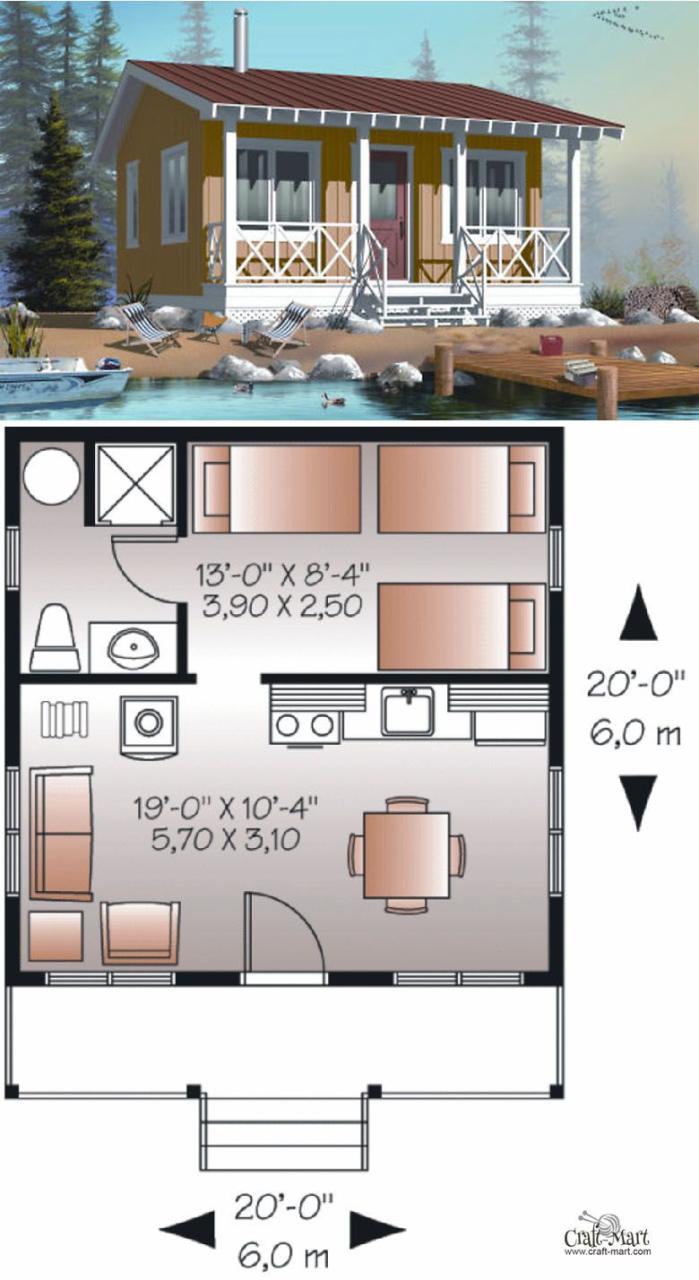Modern Tiny House Floor Plans: The Ultimate Guide to Downsizing in Style

In recent years, the concept of tiny house living has gained immense popularity, and it’s easy to see why. With the rising costs of housing, environmental concerns, and a growing desire for minimalism, many people are turning to modern tiny house floor plans as a viable alternative to traditional housing. In this article, we’ll delve into the world of tiny house floor plans, exploring the benefits, challenges, and popular design trends.
What is a Tiny House?
Before we dive into modern tiny house floor plans, it’s essential to define what a tiny house is. A tiny house is a small, portable dwelling that is typically designed for full-time living. These homes are usually built on wheels and are no larger than 500 square feet. Tiny houses can be customized to suit individual needs and tastes, but they often feature compact kitchens, bathrooms, and living areas.
Benefits of Tiny House Living
There are many benefits to tiny house living, including:
- Affordability: Tiny houses are often much cheaper than traditional houses, with prices starting from around $20,000.
- Sustainability: Tiny houses are generally more environmentally friendly than larger homes, with lower energy consumption and a reduced carbon footprint.
- Flexibility: Tiny houses are portable, making it easy to move to a new location if needed.
- Simpllicity: Tiny houses encourage minimalism and simplicity, helping to reduce clutter and stress.

Modern Tiny House Floor Plans: Popular Design Trends
Modern tiny house floor plans are all about maximizing space and efficiency. Here are some popular design trends:
- Open-Plan Living: Open-plan living is a staple of modern tiny house design. This involves combining living, kitchen, and dining areas into one open space.
- Loft Bedrooms: Loft bedrooms are a great way to make the most of vertical space in a tiny house. They often feature a cozy sleeping area with a ladder or stairs leading up to the loft.
- Compact Kitchens: Compact kitchens are a must in tiny houses. They often feature a small refrigerator, stove, and sink, with clever storage solutions to keep clutter at bay.
- Multifunctional Spaces: Multifunctional spaces are essential in tiny houses. For example, a sofa can double as a guest bed, or a dining table can be used as a workspace.

Popular Tiny House Floor Plan Designs

Here are some popular tiny house floor plan designs:
- 1. The Simple: This design features a compact kitchen, living area, and bedroom, with a separate bathroom. It’s perfect for couples or singles.
- 2. The Family: This design features a larger living area, with a separate bedroom and bathroom. It’s perfect for families with young children.
- 3. The Luxury: This design features a spacious living area, with a separate bedroom and bathroom. It’s perfect for those who want to downsize in style.
- 4. The Wheelhouse: This design features a compact kitchen and living area, with a loft bedroom. It’s perfect for those who want a unique and quirky tiny house.

Tips for Designing Your Own Tiny House Floor Plan
If you’re considering designing your own tiny house floor plan, here are some tips to keep in mind:
- Keep it Simple: Don’t overcomplicate your design. Keep it simple and functional.
- Maximize Space: Make the most of vertical space by using loft bedrooms and storage solutions.
- Consider Your Needs: Think about your lifestyle and needs. Do you need a dedicated workspace or a separate bedroom?
- Seek Inspiration: Look at other tiny house designs and floor plans for inspiration.
Common Challenges of Tiny House Living
While tiny house living can be incredibly rewarding, there are also some common challenges to consider:
- Storage: Storage is often a challenge in tiny houses, with limited space for belongings.
- Zoning Regulations: Zoning regulations can be a challenge for tiny house owners, as many areas have specific rules and regulations regarding tiny houses.
- Resale Value: Tiny houses can be difficult to sell, as they are not traditional houses.
- Community: Tiny house living can be isolating, especially if you’re not part of a tiny house community.
Conclusion
Modern tiny house floor plans offer a unique and exciting way to live. With their focus on efficiency, simplicity, and sustainability, it’s no wonder that tiny houses have become so popular. Whether you’re a seasoned tiny house owner or just considering downsizing, there’s never been a better time to explore the world of tiny house living.
In my opinion, tiny house living is a game-changer for those who want to reduce their environmental impact and live a more minimalist lifestyle. However, it’s essential to carefully consider the challenges and limitations of tiny house living before making the leap.
If you’re considering designing your own tiny house floor plan, remember to keep it simple, maximize space, and consider your needs. And if you’re not sure where to start, don’t be afraid to seek inspiration from other tiny house designs and floor plans.
Final Thoughts
Tiny house living is a lifestyle that requires flexibility, creativity, and a willingness to think outside the box. It’s not for everyone, but for those who are willing to take the leap, the rewards are well worth it.
As we move forward into a more sustainable and environmentally conscious future, it’s likely that tiny house living will continue to grow in popularity. And with modern tiny house floor plans, the options are endless.
Whether you’re a tiny house enthusiast or just starting to explore the world of tiny house living, I hope this article has provided you with valuable insights and inspiration. Remember, tiny house living is a journey, not a destination. Happy building!
Architecture Gallery by Modern Tiny House Floor Plans: The Ultimate Guide to Downsizing in Style





